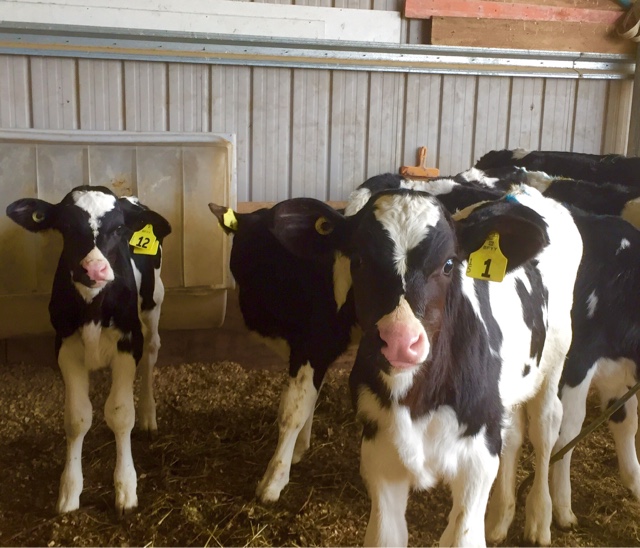Monday morning. Back to work. Our last week at Vetora.
The first call was to check out two sick cows and one lame cow. One cow was a little slow-going and had a fever. She looked like a classic case of metritis. The second cow had some really foul-smelling, watery diarrhea, in which she was shedding some of her intestinal lining. No other cows in the herd were exhibiting the same symptoms, but just in case, we took a sample to test for salmonella. After some antibiotics, both cows were reported to be doing better the next day.
The third cow at that farm was lame on it rear leg. We palpated a bit of swelling over it's stifle and felt some crepitus over the joint and tendons. The farmer opted to rest her for a while and see how she did.
After the first three cows were squared away we went to check out a cow who was acting strangely. She was down and somnolent. Her head looked generally swollen and she was holding her eyes partially closed. I was able to easily move her head up to face me and examine her. She only minimally responded to a menace and didn't fight us when we examined her nose. It's not uncommon for cows in New Zealand to get sticks caught in their nose. They use sticks to their muzzles and next thing you know, you've got a cow with a branch, broken off, up in its nose. We pulled two long sticks out of this cows nose...
I was able to barely brush the end of another stick, still lodged up its nose, with my fingertip. The farmer pulled FOUR more sticks out of this poor cows nose. We suspect that one of these twigs migrated too far up her nose, invaded a sinus, and caused an abscess. It's likely that this abscess either caused a raging headache, or penetrated into her brain and caused a brain abscess. Based on the severe neurologic signs she was exhibiting, her gave her a guarded prognosis. The farmer decided to drop the money to treat his cow and we gave her some antibiotics that would hopefully help clear up any infection she had.
Here are the culprit sticks:
If we had been in the States and were told that a cow was exhibiting neurologic signs...we would have to suspect rabies! (In this case, the somnolent form of rabies) Reportable disease!! Meaning, we might cull the cow and test for disease. Not in New Zealand....lucky buggers.
The next call of the day was a calving. Didn't take too long to pull, but it was tricky and I did a lot more watching than participating.
The last call on Monday was a lambing. It was a "lifestyler" who called us out. A lifestyler is someone who either keeps livestock as pets or runs a small hobby farm. The house we visited had about 7 or 8 sheep running around their back yard, most of them with lambs at their sides. The ewe we were called out to examine had lambed earlier (an adorable tiny white fuzzy healthy lamb), but hadn't quite bounced back. The owner was concerned that there might still be a twin that had not been born yet. I examined her and could not find a second lamb. She was, more likely, a bit weak from lambing earlier. We gave her some meds that should help her bounce back and were on our way.
Tuesday was slow. Tuesday was REAL slow. As in, I went on one call on Tuesday.
Luckily, the one call happened to be a calving. Pretty straightforward.
Murphy and I treated ourselves to a movie on Tuesday night at a pretty cool theatre in downtown Te Awamutu. The Regent Theatre first opened in 1932. It still has that old timey movie theater feel. Everything is covered in red velour and the walls are plastered with posters from films released over the past century and pictures of old Hollywood starlets and actors. We saw Mr. Holmes, because you can't go wrong choosing a film with Sir Ian McKellan.
Here's what the theatre looked like when it opened in 1932
And now it still has the same, old cinema vibe, with small theatres inside plus a few necessary upgrades.
It made for a fun (somewhat overpriced) movie-going experience. Mr. Holmes was a solid movie, by the way.






























































